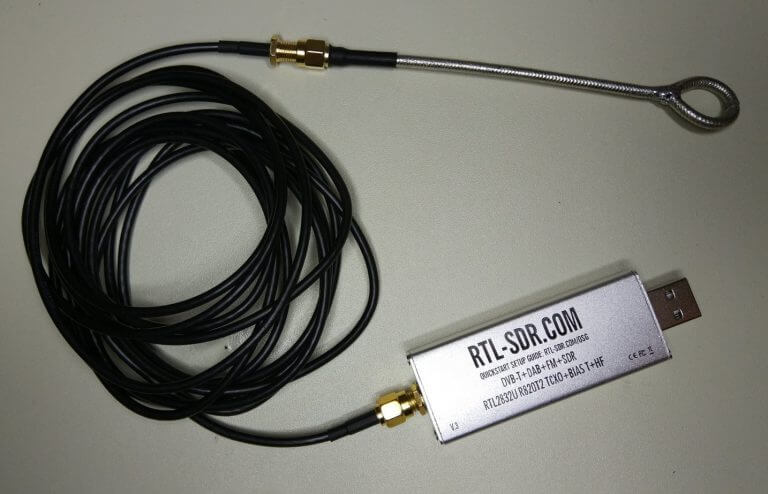Creating an EMC Probe using an RTL-SDR and Semi-Rigid Coax
Thank you to Dimitris for submitting his article on creating an RTL-SDR based EMC probe. An EMC probe is a device that can be used to detect electromagnetic interference leaking from areas on electronic devices. For example an electronic PCB might have problems with RF leaking into other components. With the probe you could determine where the leak is coming from.
To create the probe he uses a 30cm semi-rigid coax cable and an RTL-SDR dongle. The semi-rigid coax is cut in half, the center conductor stripped back, then looped around on itself and soldered to the shield. Dave from EEVBlog did a video on this previously which is what inspired Dimitris. The next steps are simply to connect the probe to an RTL-SDR, put it into direct sampling mode and probe around for signals. Note that an RTL-SDR with direct sampling like our V3 model, or an RTL-SDR with upconverter is required to receive signals below 24 MHz.
His results show that he was able to successfully probe an OCXO oscillator, by seeing the 10 MHz signal in SDR#. The rest of his post goes on to discuss the limitations of this method, and compares it against professional EMC probes available on the market.

Nice one Dimitris !
Best regards form Tom Burns and Ken Gerns !
My approach was to solder a 50 Ohm resister across the coax and encase it is heat-shrink.
The SDR was a Funcube Pro+.
I last used it to re-align an HF transceiver, worked well.
No direct electrical connection, or exposed shield, meant less chance of worshiping to the blue smoke Gods…
The probes definitely need not to be exposed.
That photo of the probes is before applying the rubber coating, but inside the article there is a photo of the final probes with the black rubber coating.
Don’t forget to turn the bias Tee ‘off’ if you decide to make and use this probe.